Mold on drywall for the bathroom is a common issue many homeowners face, especially in spaces with abundant moisture and humidity. If you’ve noticed a musty smell, water stains, or dark spots on your bathroom walls, you may be dealing with this problem. Bathrooms, by nature, are moisture-rich rooms, and their frequent exposure to steam, humidity, and occasional leaks makes them particularly prone to mold growth. It’s frustrating, especially when you’re trying to create a clean, healthy home. But the good news is that understanding why and how mold develops on drywall in the bathroom can help you prevent and manage it effectively.
Whether it’s from a leaky pipe, high humidity after a hot shower, or a poorly ventilated space, the conditions for mold growth are often right there, just waiting to happen. Once mold gets a foothold, it can spread quickly, affecting your bathroom, indoor air quality, and health. Let’s dive into this often-overlooked issue so that you can take control and keep your bathroom—along with your entire home—healthy.
Why Does Mold Develop on Drywall in the Bathroom?
Mold requires two key factors to thrive: moisture and a food source. In a bathroom, the humidity from showers and baths provides ample moisture. Drywall, often made from gypsum pressed between layers of paper, serves as an ideal food source for mold, especially in areas where condensation builds up or leaks occur.
Bathrooms are naturally prone to high humidity levels, which create the perfect conditions for mold growth on drywall. Leaks from plumbing, cracked tiles, or poor ventilation can all exacerbate the issue, allowing moisture to penetrate the drywall and lead to mold infestations.
How Quickly Does Mold Grow on Wet Drywall?
Mold can begin to grow on wet drywall within 24-48 hours, making it critical to address water issues in the bathroom immediately. Whether it's due to a leak or poor ventilation, moisture can cause mold to spread rapidly, leading to health risks and significant damage to your home.
Is Mold on Drywall in the Bathroom Dangerous?
Yes, mold on drywall can be hazardous to your health. Mold spores, fragments, and mycotoxins released into the air can cause a variety of health issues, including:
- Respiratory problems
- Allergies
- Skin irritation
- Chronic fatigue
- Brain fog
Certain individuals, such as those with compromised immune systems, are at greater risk of experiencing severe symptoms from mold exposure. Additionally, mold can worsen existing health conditions, including autoimmune disorders.
How to Identify Mold on Drywall in the Bathroom

With so many species existing in the world, mold on drywall in the bathroom can appear in a variety of colors, shapes, and textures. Some of the most common colors include green, white, grey, blue, red, black, brown, or a combination of them. As for textures, they could be fuzzy, powdery, velvety, or slimy.
If any type of unidentifiable growth pops up, it's safe to assume there’s mold.
Other Signs of Mold on Drywall
Don’t just rely on visibility, though. Sometimes, mold can be hidden behind the drywall. In that case, pay attention to these other indicators as well.
1. Water Damage
Signs of water damage mean that mold had a moisture-rich opportunity to grow. You may not see visible growth yet, but that doesn’t mean there isn’t a problem. The colony could be in its early life stages or growing on the other side of the surface.
That’s why water-damaged areas should be treated as if contaminants are already present.
Signs to look out for include:
- Bubbling, cracking, or peeling paint
- Coffee-like stains and discoloration
- Condensation droplets
- Drooping or warping of the surface
2. Odor
If you don’t find any visible issues, that doesn’t mean there isn’t a problem. It’s also important to rely on your nose.
Mold growth often creates a damp, musty, earthy smell due to the release of gases called microbial volatile organic compounds (MVOC). If you smell this, you may be dealing with a contamination situation.
3. Chronic Health Issues
Our bodies are incredible warning systems that will alert us if something’s wrong, including a contaminant in our indoor environments. It’s up to us to listen to these signals and figure out the root cause so that it can be eliminated.
If chronic symptoms suddenly appear and worsen near specific parts of the home, this can be your body’s way of saying, “Hey, something is not right here.”
How to Remove Mold on Drywall in the Bathroom

If you spot mold on drywall for the bathroom, your first instinct might be to grab some bleach and scrub it away. While that might seem like a quick fix, it won’t actually solve the problem or improve your indoor air quality. Bleach can handle surface mold, but it won’t get rid of the deeper contamination, like spores, bacteria, mycotoxins, or other harmful particles. The best course of action is to call in the professionals who know exactly how to deal with mold, especially when it’s on materials like drywall that are harder to treat.
Drywall is tricky because it’s porous, which means mold can grow not just on the surface but also behind it—possibly even spreading to your home’s foundation. That’s why it’s so important to address the entire contamination. Removing the mold, spores, and toxins from both the surface and deeper layers is key to restoring a safe home environment.
It’s also hard to know just how bad the problem is. Has the mold spread beyond the bathroom? Is it causing hidden damage elsewhere in your home? That’s where professionals come in, as they can assess the full extent of the contamination and make sure your home is completely safe.
The good news is that replacing drywall after it's the space has been cleaned and remediated properly is relatively affordable. So, while it’s an investment, it’s a small price to pay for your health and the integrity of your home. Let’s break down the right steps for handling mold on drywall for the bathroom the right way.
Step 1: Find a Mold Inspector
The first thing you’ll need to do is hire a mold inspector. A qualified inspector will help you understand the full scope of the problem, gathering data that will guide the remediation process. This inspection is key—make sure they spend enough time going through your home to assess both the interior and exterior, using the right methods to measure contamination levels.
Step 2: Hire a Remediation Team
Once the inspection is complete, it’s time to bring in a remediation team. Not all mold remediation companies are created equal, so take your time to find one that prioritizes your health and safety. You want a team with proven experience in mold removal, one that follows a thorough process to ensure the job is done right. Their plan should focus on three main goals:
- Remediate the sources properly.
- Identify and address the problems that led to those sources in the first place.
- Eradicate all contamination created by those sources, including toxins and endotoxins.
If any of these steps are missed, the remediation will be incomplete, and you could end up dealing with recurring issues. Leftover mold, spores, or toxins can make your home unhealthy again, causing long-term exposure to harmful substances.
DIY? Proceed with Caution
If you’re feeling up to the challenge and want to try handling the mold on drywall for the bathroom yourself, there are a few things to keep in mind. DIY mold remediation is only recommended for small areas (less than 10 square feet) and should be done with caution. Before you get started, it’s a good idea to contact an expert for a breakdown of how to tackle the issue properly.
Here’s what you’ll need to do:
- Use personal protective equipment (PPE) and proper engineering controls
- Fix the source of the mold (leaks, poor ventilation, etc.)
- Remove and replace all porous materials, like drywall
- Decontaminate all surfaces according to proper remediation guidelines
- Thoroughly clean the surrounding area to remove any particles released during the process
-
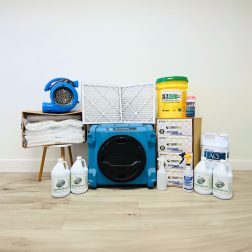
HomeCleanse DIY
All the equipment and materials we use to remediate your home, plus consultation and support...
-
$5,995.00 – $9,995.00 SHOP NOW -
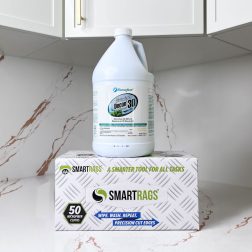
Mold & Bacteria Contents Cleaning
Remove harmful pollutants that accumulate in the dust of your home. (Options available for renters...
-
$99.00 – $349.00 SHOP NOW
If you’re not confident that you can cover all of these steps, it’s a good idea to bring in the professionals. It’s better to spend a little more upfront and know the job is done right than to deal with mold coming back later.
Ready to get rid of mold on drywall for the bathroom once and for all? Let our team at HomeCleanse help. We’re here to make sure your home is healthy and safe again, so schedule a FREE 15-minute consultation today.
Preventing Mold on Drywall in the Bathroom

The best way to avoid mold on drywall in the bathroom is through proactive moisture control and regular maintenance. Here are some tips to help prevent mold growth:
- Control Humidity: Keep bathroom humidity levels between 35% and 50%. Use an exhaust fan during and after showers, and consider investing in a dehumidifier if necessary.
- Fix Leaks Promptly: Repair any plumbing leaks, broken tiles, or caulking issues that could allow water to seep into the drywall.
- Ventilate the Bathroom: Crack a door or window and turn on the exhaust fan while showering. If the humidity in the bathroom doesn’t lower to the right level, consider investing in a dehumidifier for the room.
- Dry Wet Items Immediately: Hang up towels, bath mats, and shower curtains to dry after use. Wipe down wet surfaces promptly to avoid moisture buildup.
- Inspect Regularly: Check for signs of water damage, mold growth, or leaks regularly, especially in areas that are exposed to high moisture levels.
- Upgrade Bathroom Materials: If renovating, consider using moisture-resistant drywall such as green board or purple board, which offers better protection against mold growth than standard drywall.
Check out this blog to learn more about protecting this space.
Safeguarding Your Bathroom
Mold on drywall in the bathroom is a common but serious issue. By controlling moisture, fixing leaks, and maintaining proper ventilation, you can significantly reduce the risk of mold growth. If mold does appear, act quickly to address it with professional remediation to protect your home and health. Preventing mold in the bathroom is not only cost-effective but also essential for maintaining a healthy indoor environment.
Must-Have Indoor Air Quality Tools
-
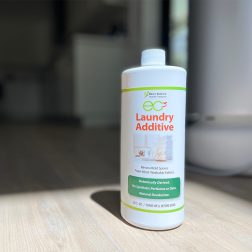
EC3 Laundry Additive
Add EC3 to every rinse cycle to rinse away mold, bacteria and musty odors from...
-
$23.00 SHOP NOW -
Sale
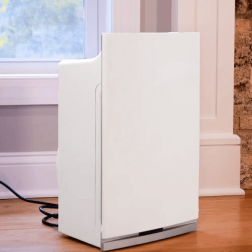
Intellipure Compact Air Purifier
Buy one Compact, get one free. Simply add one to your cart, and a second...
-
Original price was: $299.00.$199.00Current price is: $199.00. SHOP NOW -
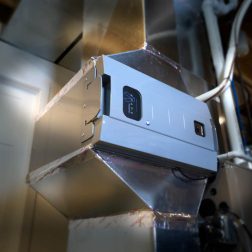
Intellipure SuperV Whole House Air Purifier
Turn your HVAC into a filtration system, removing 99% of ultrafine particles including airborne mold,...
-
$2,000.00 – $2,995.00 SHOP NOW -
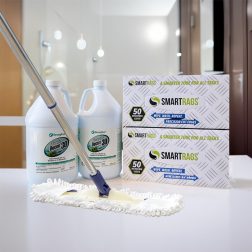
HomeCleanse Cleaning
Take your cleaning to the next level buying all the tools we use to keep...
-
$299.00 – $549.00 SHOP NOW -

Mold & Bacteria Contents Cleaning
Remove harmful pollutants that accumulate in the dust of your home. (Options available for renters...
-
$99.00 – $349.00 SHOP NOW -

EC3 Mold Solution Concentrate
Micro Balance EC3 Mold Solution Concentrate is a natural botanical that removes mold spores, bacteria,...
-
$33.00 SHOP NOW -
Sale

Industry-Leading Intellipure Ultrafine 468
The Intellipure® Ultrafine 468 features our proprietary DFS technology, which traps and eliminates potentially harmful...
-
Original price was: $999.00.$499.00Current price is: $499.00. SHOP NOW -
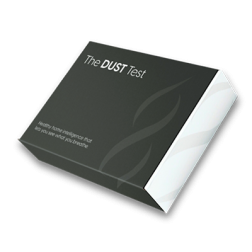
The Dust Test
The Dust Test is a comprehensive at-home test that helps you identify mold and toxins...
-
$274.00 SHOP NOW -
Sale
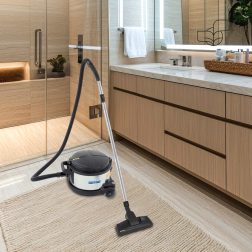
EuroClean 4 Gallon Hepa Vacuum
The Euroclean GD930HSP is a 4 Gallon Dry HEPA Vacuum that meets the EPA's standards...
-
Original price was: $849.00.$619.00Current price is: $619.00. SHOP NOW -
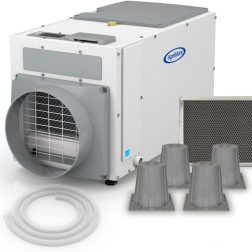
AprilAire E080 Professional Dehumidifier Bundle
Includes all the dehumidifier accessories you will need. Our Aprilaire E080 comes with a drain...
-
$1,499.99 SHOP NOW
